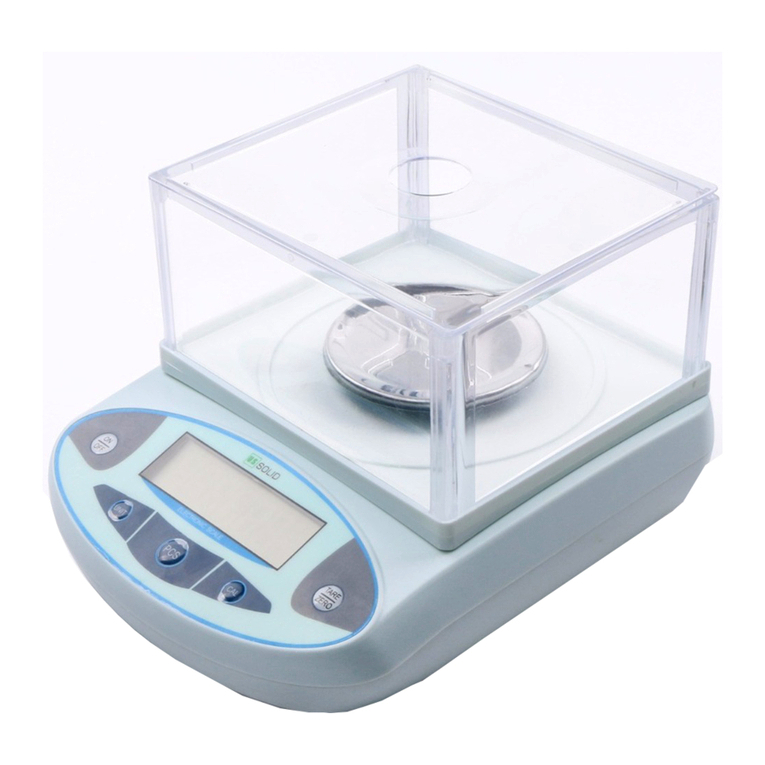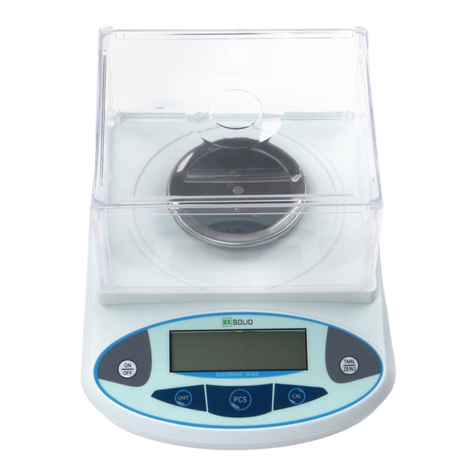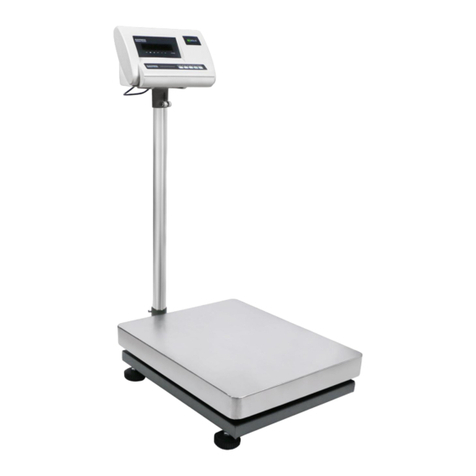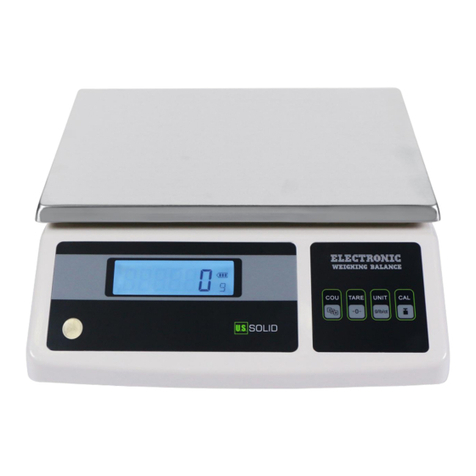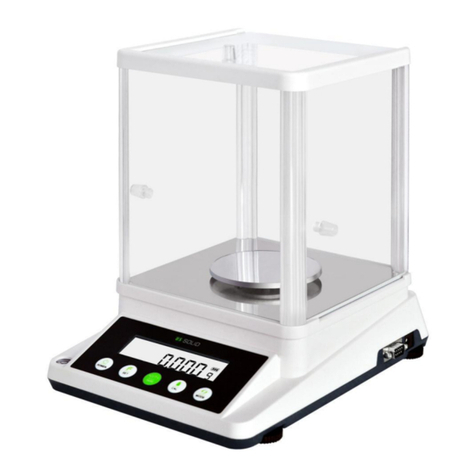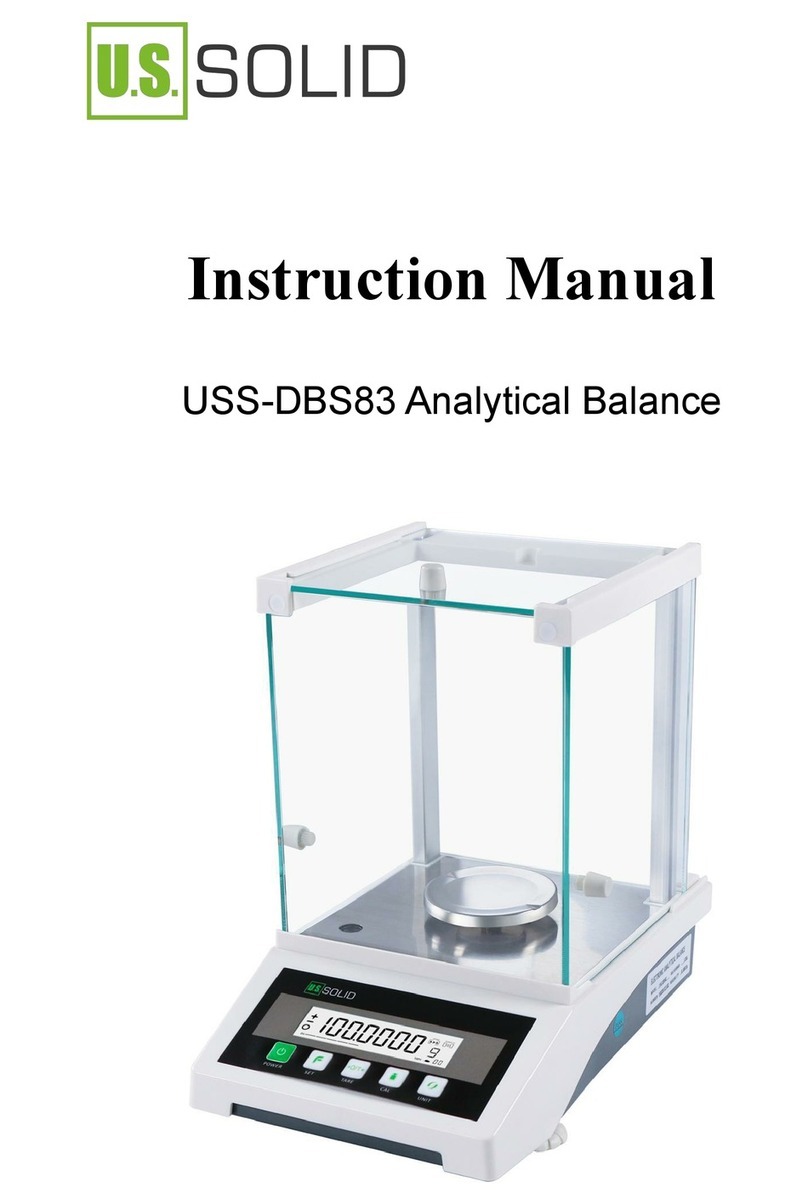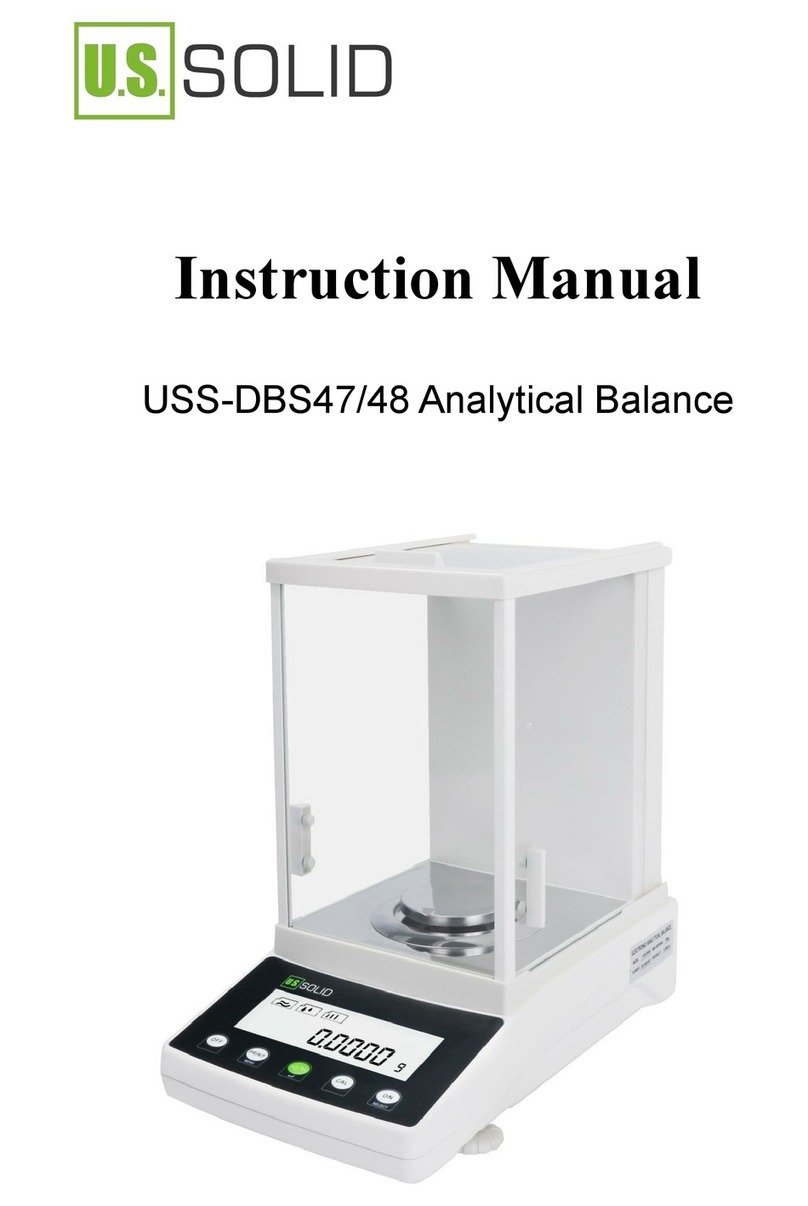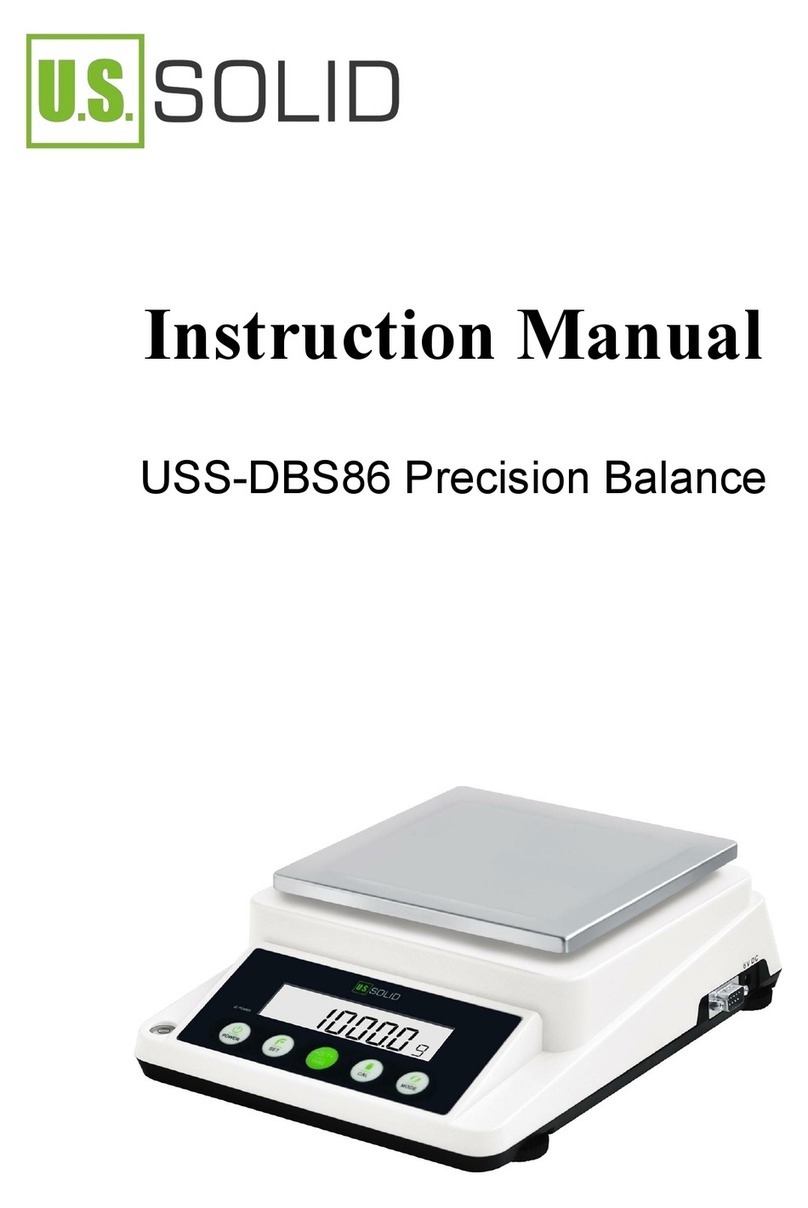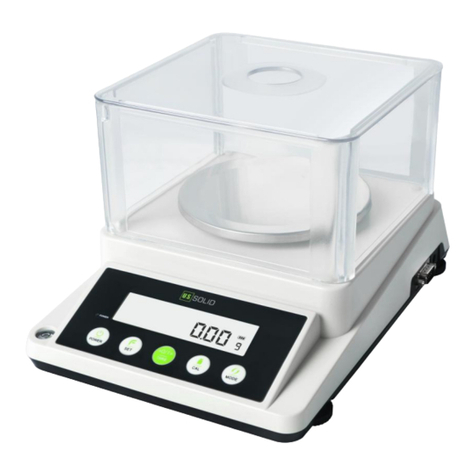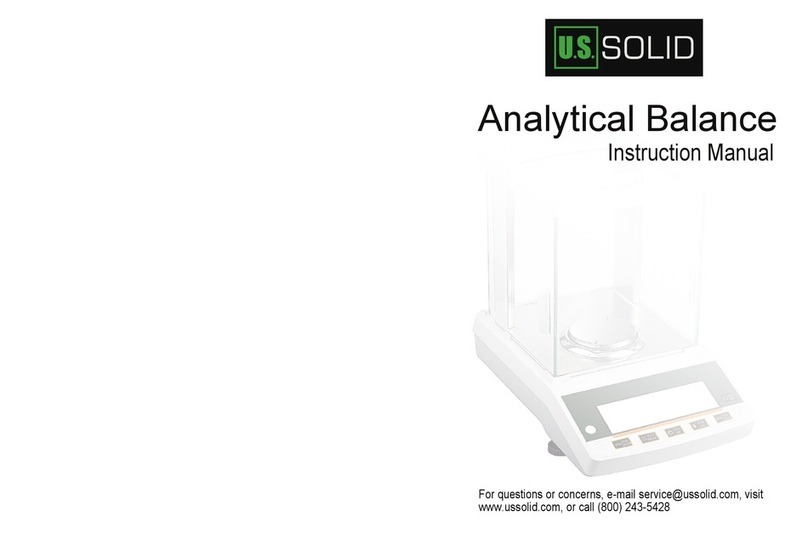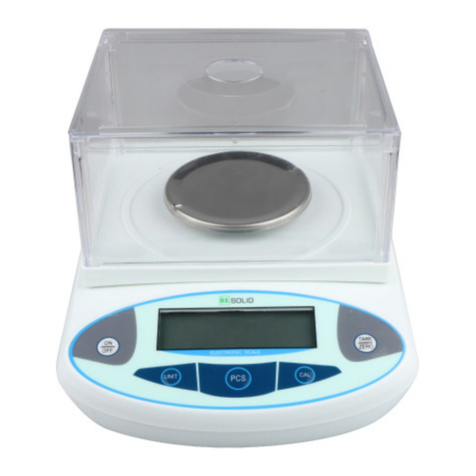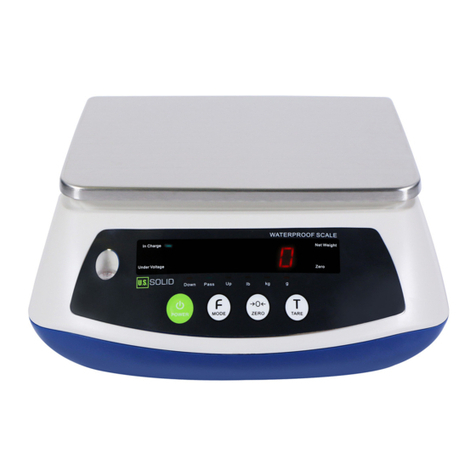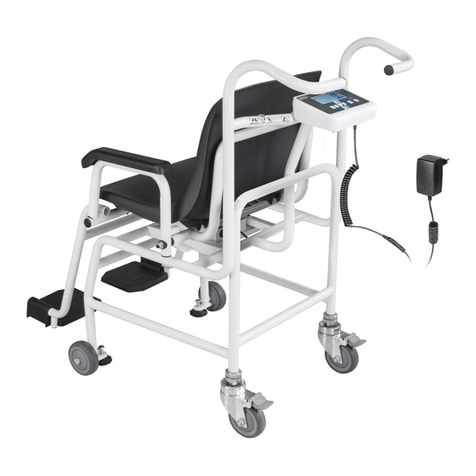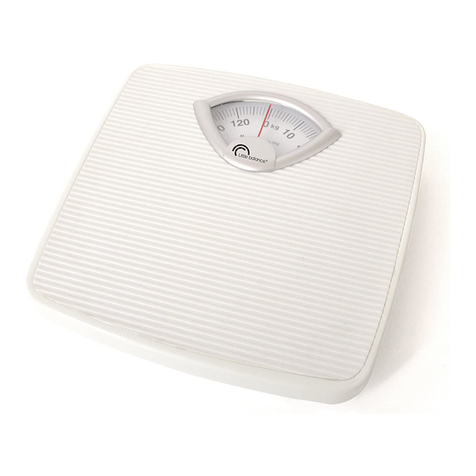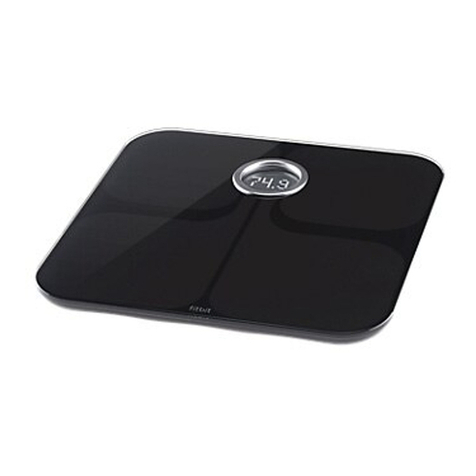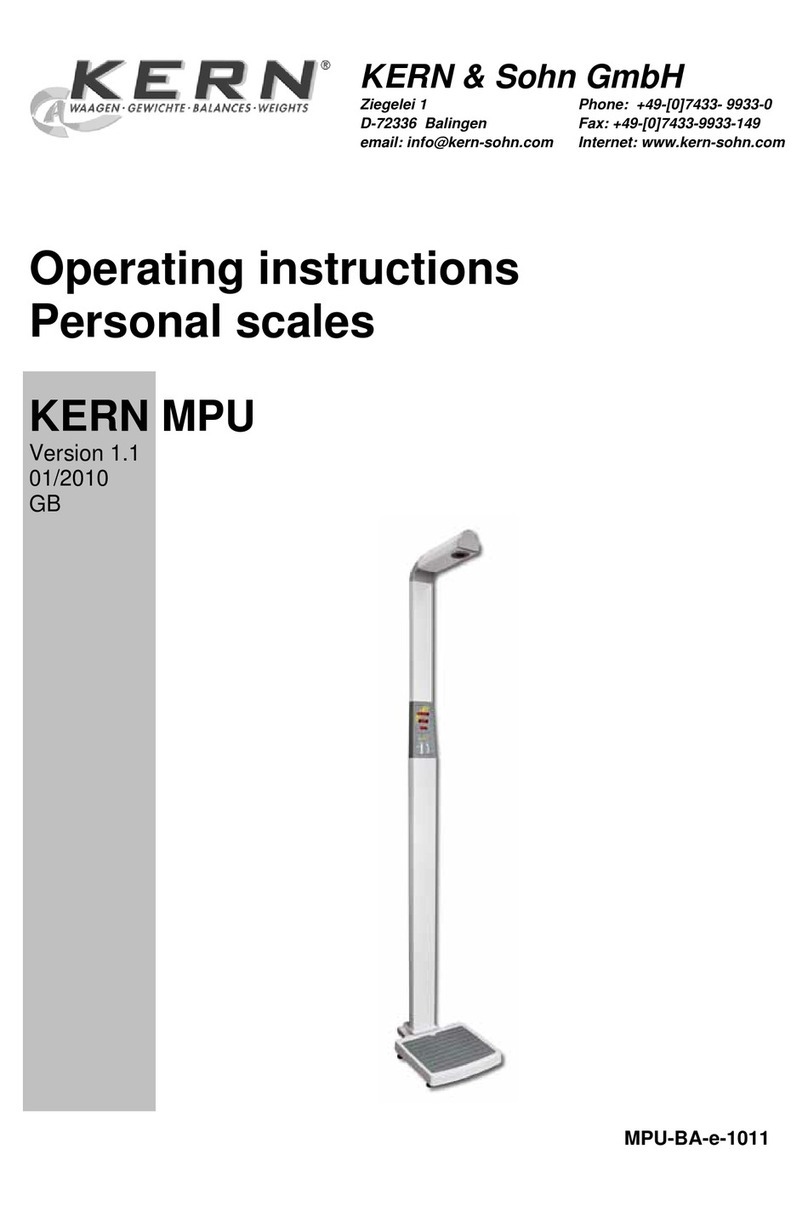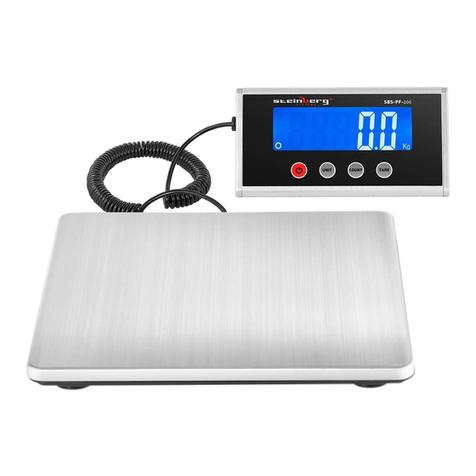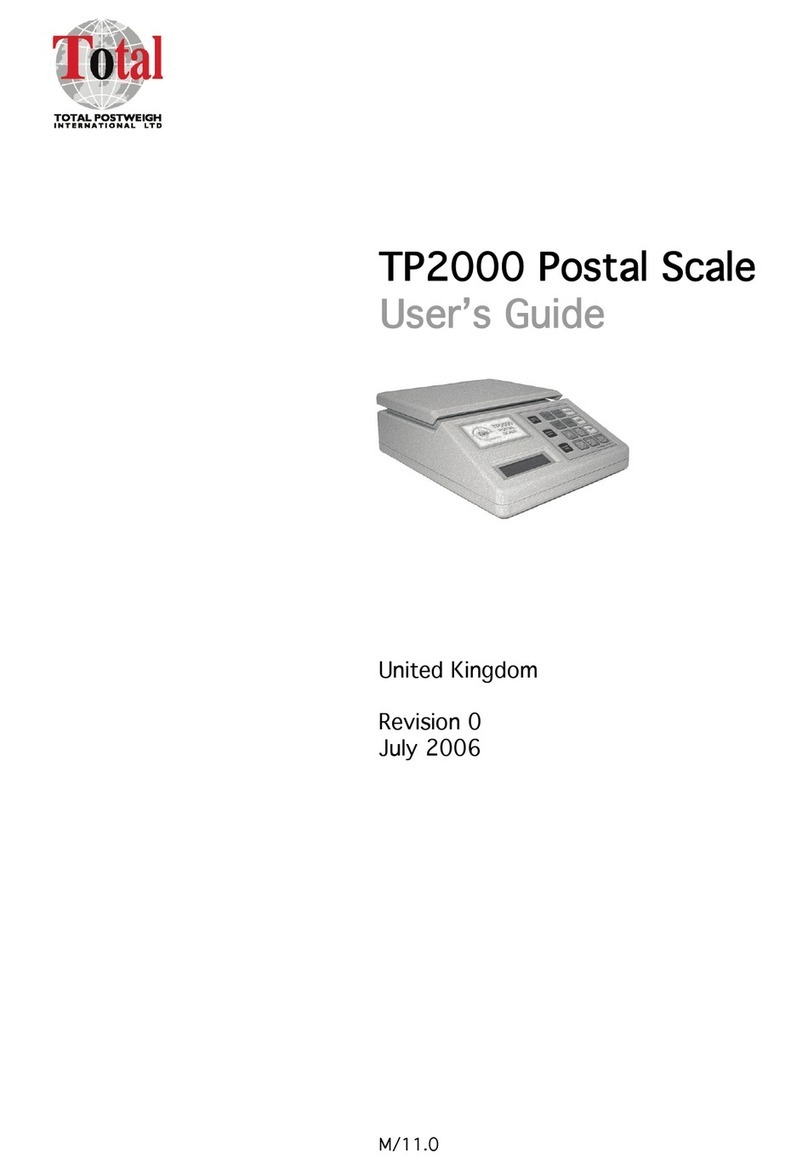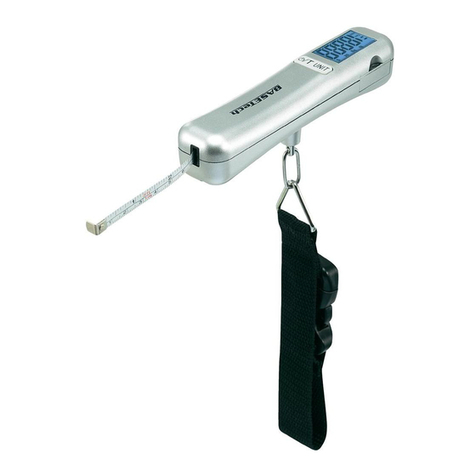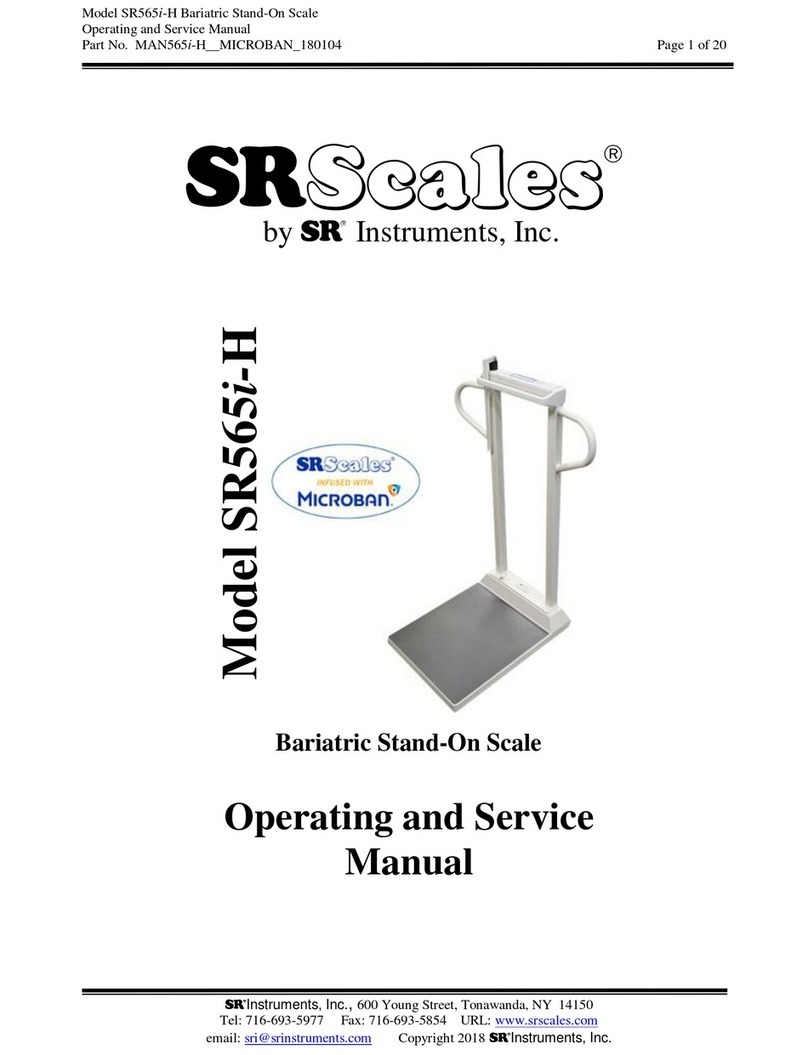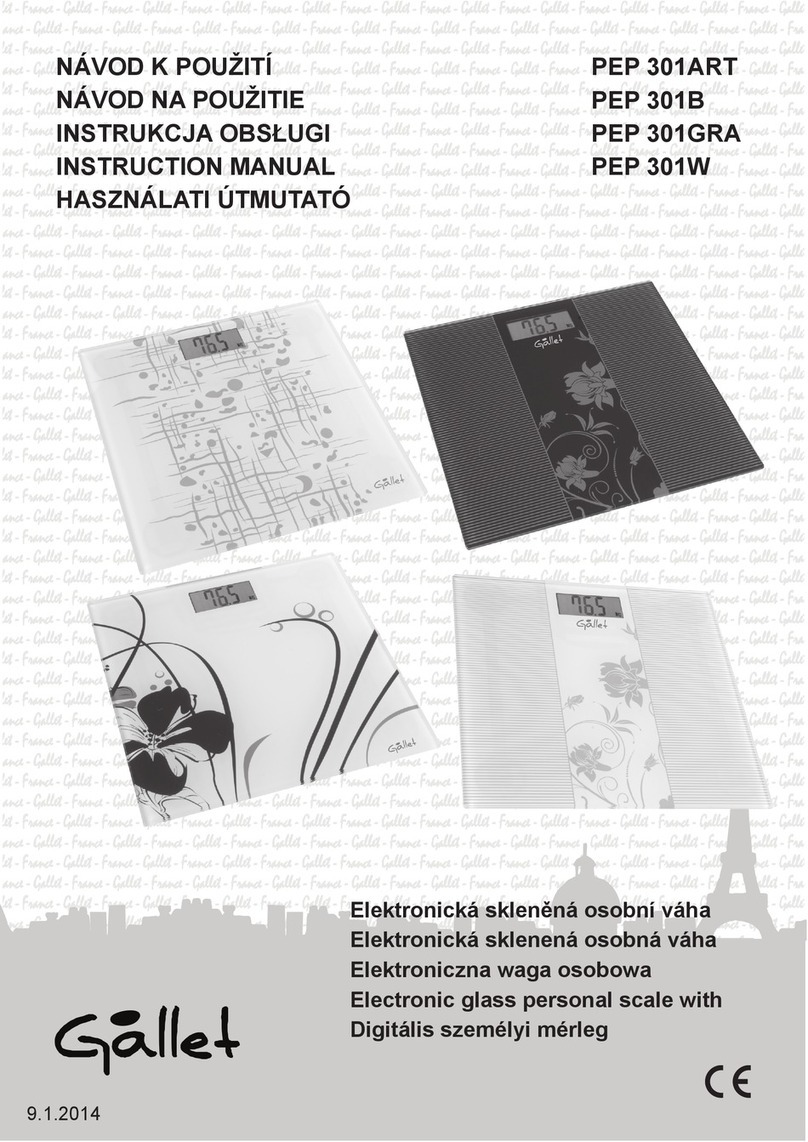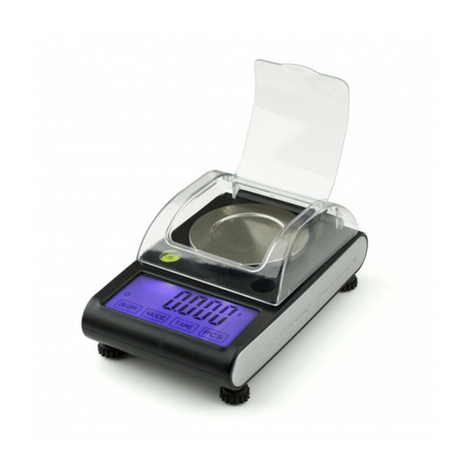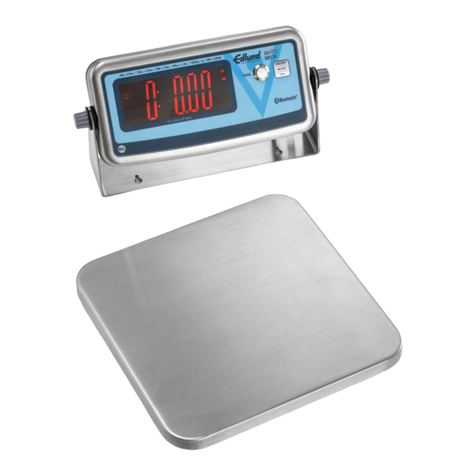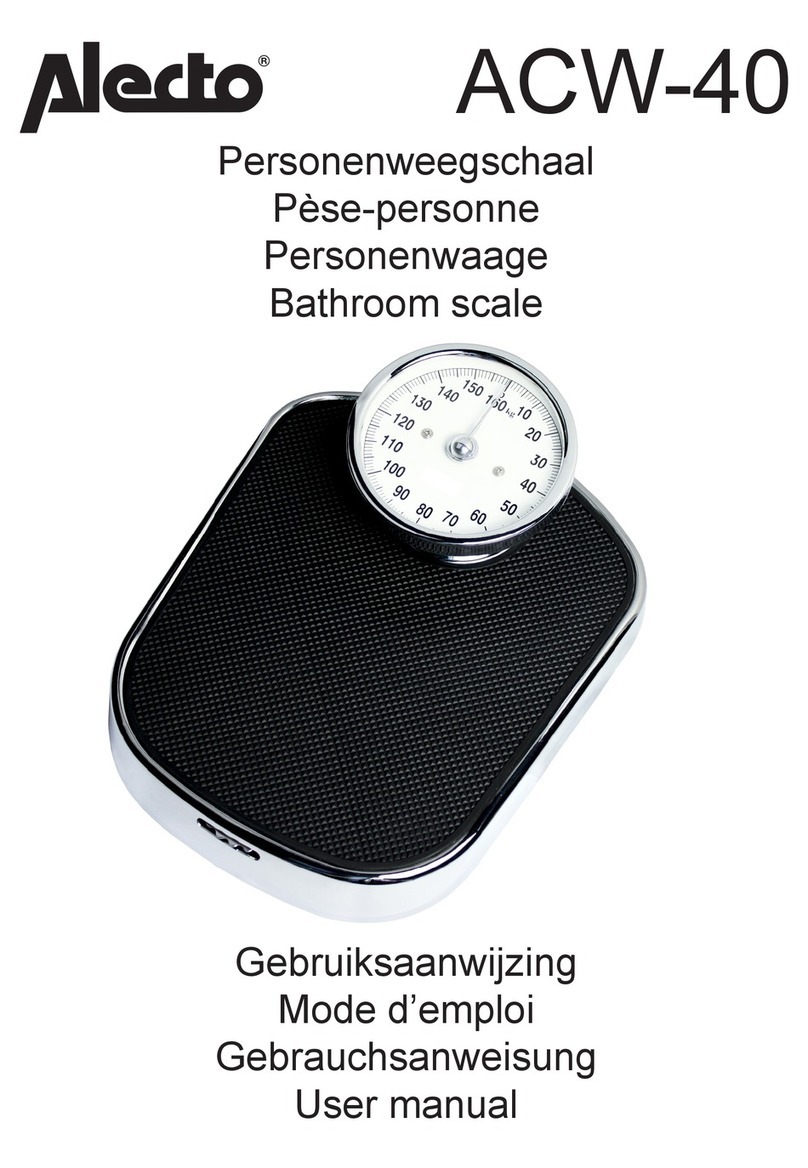
U.S. Solid®•USS-DBS Models • All Rights Reserved • Page 8
U.S. Solid® • 1200 E.55th Unit C, Cleveland, OH, 44103 • www.ussolid.com
U.S. Solid®•USS-DBS Models • All Rights Reserved • Page 8
U.S. Solid® • 1200 E.55th Unit C, Cleveland, OH, 44103 • www.ussolid.com
V. Installation
Choosing the installation location
When analytical balances are used in routine lab or industrial measurement environ-
ments, the weighing speed will be much quicker, and the results more accurate. The
location should meet the following conditions:
1. Work room should be clean and dry
2. Balance should be placed on a solid, stable, plain at surface
3. Avoid locations in which the balance could be exposed to any of the follow-
ing:
a. Airow from air conditioners, fans, doors, or windows
b. Vibrations from surrounding or nearby equipment
c. Direct sunlight or radiation
d. Electromagnetic waves or elds
4. Do not use the balance anywhere exposed to explosive, combustible, or
corrosive gases.
5. Do not use the balance in areas with high humidity or high levels of dust
6. When moving from a cooler to a warmer place, the accuracy and reliability of
the scale will be inuenced by the moisture condensation inside the balance.
In order to eliminate this inuence, it is best to leave the scale unplugged in
its new location for at least two hours before next use.
7. Avoid extreme temperatures or exposure to direct sunlight or air condition-
ers. Ideal working temperatures are between 17.5 C and 22.5 C (63.5 and 72.5
F) with tempature uctuations of less than 1 C (1.8 F) per hour.
8. Keep the balance clean.
9. Do not leave material on the balance when not in use.
10. Always use the correct power supply and voltage with the balance; the bal-
ance is supplied with a power adapter 110-220 V/50-60 Hz.
Unpacking and inspection
Check that all of the items indicated below are included in the package and that noth-
ing has been damaged:
• Balance
• Pan
• Power Cable (AC Adapter)
• External Calibration weight
In case the balance or any component is damaged during transport, tell your transpor-
tation agent immediately in order to process claims within the proper time frame.
VI. Using the Balance
Level adjustment
Once the balance is placed at its location, check the bubble level; if bubble is not
well-centered, turn the adjustable feet so the bubble moves to the center and the
balance is properly leveled.
Start
1. Connect the balance to the power supply and press ON key on the panel
2. When the balance turns on, wait 30 minutes for the necessary warm up time for
better performance and stability for the balance.
3. Once warm up time has passed, it is recommended that the balance be calibrated.
4. After calibration, the balance will enter weighing mode
5. To turn the balance o, press the OFF key on the panel and the display will shut
o. If the balance will be unused for an extended period of time, disconnect it
from the power supply.
Calibration
1. Press CAL key; the value of the necessary weight will ash on display
2. Put the calibration weight on the pan; to complete this step, open the glass door,
put the weight on the pan and close the door again. Wait until the value of the
calibration weight stops ashing and is xed on the display (e.g. 100.0000 g,
200.0000g, etc., depending on the model)
3. Remove the weight from the pan; for this, open the glass door, remove the weight
from the pan, and close the door again
4. The balance will enter weighing mode and will display 0.000g or 0.0000g
Note: Each balance includes the necessary weight to complete external calibration
